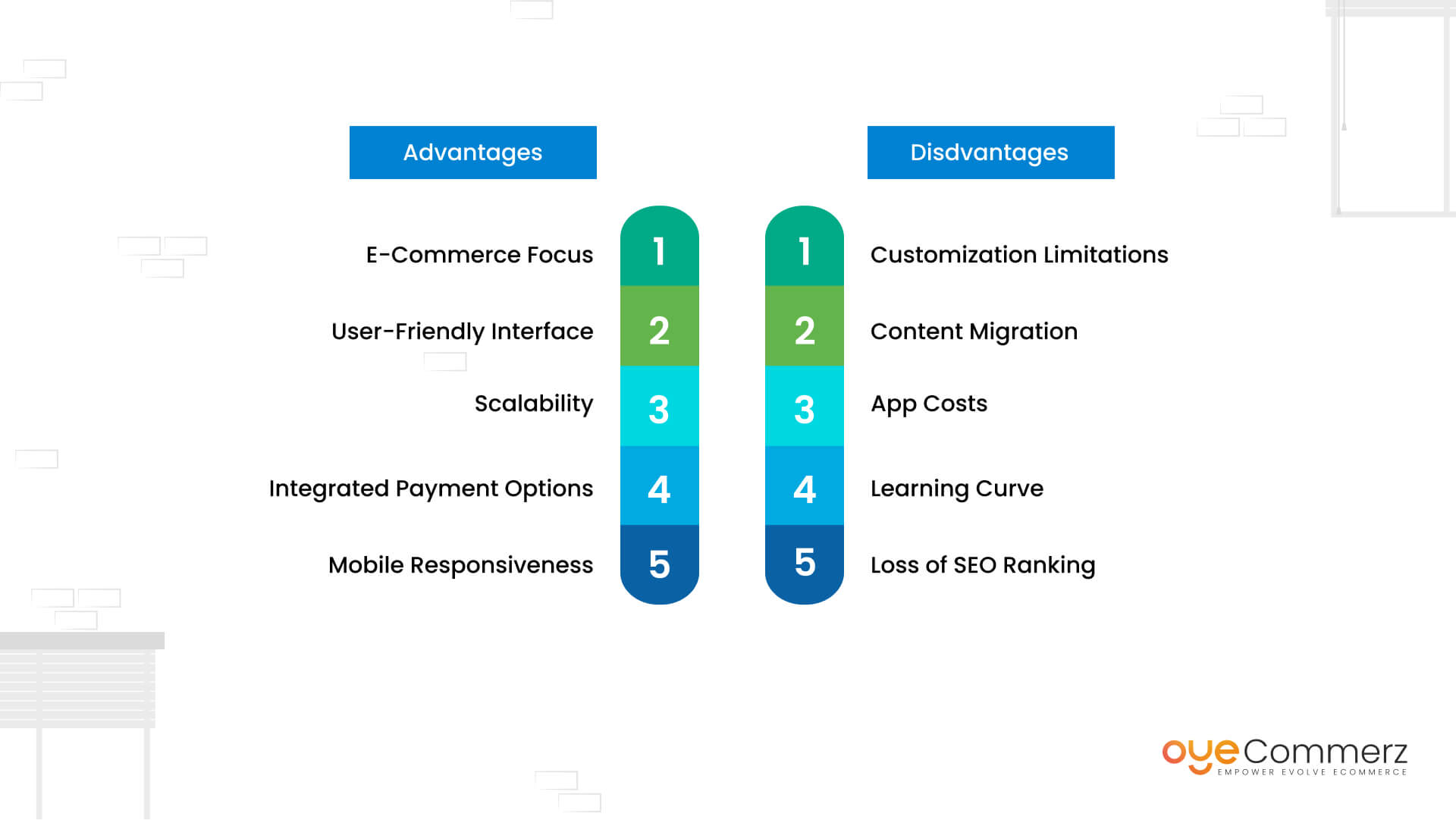Transitioning from WordPress to Shopify marks an exciting step in streamlining your e-commerce processes. As businesses expand, choosing a solution that aligns with scalability, UX, and customization is essential. Shopify has emerged as a favorite for e-commerce professionals, offering superior flexibility, data protection, and ease of use. In this guide, we will delve into why this migration is a game-changer, highlight the benefits, and share actionable steps to facilitate a seamless move.
1. Top Reasons to Transition from WordPress to Shopify
The combination of WordPress and WooCommerce, has served countless e-commerce platforms. However, as companies scale, challenges like reliance on plugins, security vulnerabilities, and complex setups can hinder progress. Shopify, specifically created for e-commerce, addresses these issues with an all-in-one, intuitive solution. Real data supports this transition—Shopify powers over 4.4 million websites worldwide, with a reported 10% increase in sales performance for many businesses post-switch.
2. Key Benefits of Shopify for E-commerce Success
Shopify’s powerful platform is tailored for scaling brands. Its notable benefits include:
- Seamless Customization: Shopify offers over 80 expertly crafted themes.
- Integrated Tools: Capabilities such as Shopify Payments and integrated SEO save time and effort.
- International Expansion: Currency versatility and localization features empower brands to expand internationally.
Additionally, Shopify boasts an uptime rate of 99.98%, ensuring your website remains accessible.
3. Getting Ready for Your WordPress-to-Shopify Transition
Prior to starting the migration process, evaluate your current store. Analyze inventory details, customer details, and SEO performance. Resources such as Shopify’s Migration Kit or external tools can simplify this process. Create a comprehensive plan, making sure all resources—item details, images, and articles—are optimized for transfer.
4. The Importance of Accurate Data Migration
Data migration is a cornerstone of a successful transition. When moving from WordPress to Shopify, focus on:
- Product Information: SKU, descriptions, and groupings.
- Client Information: Emails, order history, and custom fields.
- SEO Optimization: Preserve meta tags, URLs, and redirects to avoid SEO losses.
Leverage tools such as LitExtension to streamline data transfer while minimizing errors.
5. Customizing Your Shopify Store
Post-migration, customizing your Shopify store ensures it aligns with your business identity. Utilize Shopify’s intuitive page builder to create layouts with ease. Shopify's templates are mobile-responsive, providing a smooth UX across devices—a critical factor, given 74% of online shopping comes from mobile users.
6. Maintaining SEO During Migration
SEO is vital for maintaining your online presence Migration from WordPress CMS during migration. Shopify excels in SEO with organized link formatting, preloaded features, and smooth content management. Make sure you:
- Set up URL forwarding for existing links.
- Enhance updated content with targeted phrases.
- Use Shopify's apps Plug in SEO to track analytics after the switch.
7. Post-Migration Testing
After finishing the transfer, run detailed checks.
Review: - Page load times (Shopify delivers faster speeds in contrast with WP).
- Payment integration reliability and checkout processes.
- Adaptability across devices.
Quality assurance guarantees your store provides a seamless shopping experience from day one.
8. Real-Life Success Story
One such migration success story is Gymshark, a fitness apparel brand that transitioned to Shopify. Post-migration, the company experienced a 60% increase in mobile sales and significantly lowered site downtime. This highlights the potential of Shopify in driving online business success.
9. Overcoming Common Migration Issues
Migration is not without obstacles, such as data integrity and reconfiguring custom functionalities. However, Shopify’s extensive assistance and third-party experts make overcoming these hurdles manageable. Partnering with qualified Shopify developers helps guarantee a smooth transition.
10. Making the Switch: The First Step Toward Success
Switching from WP to Shopify represents a strategic approach to online retail. By addressing scalability, simplifying management, and improving buyer satisfaction, Shopify enables companies to thrive in challenging industries.
Final Thoughts
Switching from WP to Shopify offers a smart solution that can significantly boost your e-commerce success. With a well-structured strategy, the right tools, and expert support, you can achieve new growth opportunities.
Excited to start the journey? Reach out today to learn how our Shopify migration services can transform your e-commerce platform. Get in touch today, or ask yourself: Can your business afford to miss out on Shopify’s growth potential? Migrating eCommerce platforms
